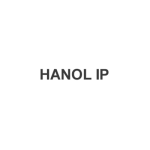Trademarks can last forever through constant renewals, even after the expiration of an associated patent. Under the recently revised damage systems in the Korean Trademark Act, namely the adoption of punitive damages and the increased amounts of statutory damages for willful infringement, trademark disputes may be considered as an evergreening strategy for the original pharmaceutical companies.
In examinations and disputes regarding pharmaceutical trademarks, it is necessary to consider securing the safety of public health and ensuring fair competition in the pharmaceutical industry. Accordingly, more precise criteria need to be applied as to distinctiveness, functionality, similarity of the marks and designated goods for pharmaceutical trademarks. Becoming acquainted with such criteria in South Korea will help in the development of effective strategies in trademark filings and management for the pharmaceutical products.
Distinctiveness and functionality
Applications for pharmaceutical trademarks are often for the name of a pharmaceutical product. In many cases, they are combined with the chemical name of a raw material of the drug, a specific prefix or suffix, such as -ase, -amin, -mide, or medical/pharmaceutical terminology. In other cases, many pharmaceutical trademarks directly or indirectly indicate the use or efficacy of the pharmaceuticals.
The criteria for distinctiveness of pharmaceutical trademarks may vary depending on whether the drug is available over-the-counter or by prescription. For prescription drugs, even if it is a trademark whose meaning cannot be easily recognisable in view of the general consumers’ perception, the distinctiveness of the mark could be denied. Trademarks merely composed of international non-proprietary names (INNs) for pharmaceutical substances are also deemed to be non-distinctive.
In the cases of the trademarks, ‘PDRN’, an acronym of polydeoxyribonucleotide, for cell revitalisation drugs and cosmetics, and ‘Pneumoshield’ for a pneumonia vaccine for humans, these marks were decided to be non-distinctive in view of experts’ perception (Supreme Court decisions 2018Hu10069 and 2000Hu2170).
Trademarks for the 3D shape of a pill, vial, or package of a pharmaceutical product, unless combined with distinctive word(s) or device(s), would be rejected on the basis of lack of distinctiveness or functionality which cannot be monopolised.
Similarity between marks for pharmaceutical products
Trademarks of generic drugs are often named to be associated with the product name or ingredients of the original drug. In this regard, if the main component of the trademark is the name of the raw material of the drug, or if it indicates use, quality or efficacy of the drug, the trademark of the original drug may not be sufficiently protected. This is because such terms are regarded as descriptive or non-distinctive portions, and thus do not have an important role in determining the similarity of the marks.
The generic drug brand ‘Gliatamin’ and the original brand ‘Gliatilin’ for the treatment of dementia were judged to be dissimilar to each other since the ‘Glia’ portion, referring to neuroglia or glia cells, is recognised as a descriptive prefix for the designated goods (Supreme Court decisions 2017Hu2208 and 2215).
Similarity between designated goods for pharmaceutical products
Under local practice, pharmaceutical products encompass all drugs such as human drugs, veterinary drugs, agricultural drugs, as well as raw materials of drugs, quasi-drugs, dietary supplements and health functional foods. In principle, all such products are treated as similar goods in South Korea, even when belonging to different classes.
Therefore, ‘finished drugs’ and ‘raw material for drugs’; ‘nutritional supplements’ and ‘medicines for digestive organs’; and ‘vitamin tablets’ in class 5 and ‘ginseng extract for beverages’ in class 29 were judged to be similar (Supreme Court decision 2011Hu538, Patent Court decisions 2013Heo4329, 2015Heo2310).
Korean courts have been particularly cautious as to the similarity between human drugs and agricultural drugs in order to prevent any possible confusion or misuse. Thus, these goods were judged to be similar (Supreme Court decisions 97Hu2262, 96Hu2470, Patent Court decision 2003Heo2621).
On the other hand, the Intellectual Property Trial & Appeal Board (IPTAB) has taken different views and judged that pharmaceuticals and agricultural drugs are dissimilar since they are regulated by different laws and require separate qualifications to manufacture and sell such products (IPTAB decisions 2011Won1112, 2208, 2008Won13498).
Other criteria and considerations
A mark is regarded as deceptive or having been filed with an unjustifiable purpose when it is identical or similar to the name of another entity’s licensed pharmaceutical or agricultural drug, or when the mark contains the name of a raw material of a drug while designating another medicine that is not made of such raw material.
The court judged that ‘Hylaform’ shall be invalidated because it was registered by a person other than the licensed manufacturer or its authorised sub-licensee, and thus such registration is against the public order (Patent Court decision 2006Heo11138). In the case of cancellation action on the basis of non-use, it may not be considered as appropriate use of a trademark in Korea when the registrant has used its mark without a product license for the manufacture, sale, or import of the registered pharmaceutical goods, and thus, the trademark registration could be cancelled.
Considering the nature of pharmaceuticals as being critical to public health, the Korean Intellectual Property Office (KIPO) and the Korean courts have been judging the registrability and validity of pharmaceuticals according to more specific criteria. Since such sophisticated criteria are applied to examination and disputes in the pharmaceutical trademarks, it is necessary to pay close attention in selecting, registering, and clearing pharmaceutical trademarks.
Min Son
Partner, Hanol IP & Law












